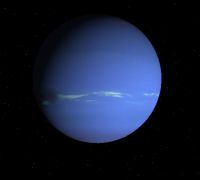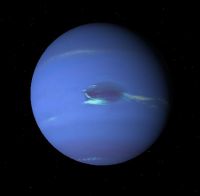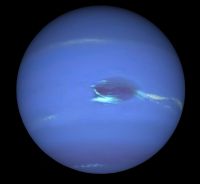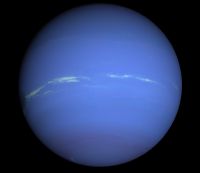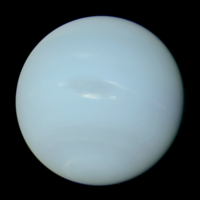Difference between revisions of "Neptune"
(Added content.) |
|||
| (16 intermediate revisions by the same user not shown) | |||
| Line 1: | Line 1: | ||
| − | {| cellpadding="2" cellspacing="0" style="margin:25px 0 0 10px; border:3px solid lightsteelblue;width:250px; font-size:90%; font-family:'Arial','Helvetica'; float: right; clear: right;" | + | {| cellpadding="2" cellspacing="0" style="margin:25px 0 0 10px; border:3px solid lightsteelblue;width:250px; font-size:90%; font-family:'Arial','Helvetica'; float: right; clear: right;"Template in Orbiter" |
!bgcolor="lightsteelblue" colspan="2" align="center" |Neptune | !bgcolor="lightsteelblue" colspan="2" align="center" |Neptune | ||
|- | |- | ||
| − | |colspan="2" align="center"|[[Image: | + | |colspan="2" align="center"|[[Image:Neptune-neptunezip.jpg|240px]] |
|- | |- | ||
|colspan="2" align="center"|'''Neptune in Orbiter''' | |colspan="2" align="center"|'''Neptune in Orbiter''' | ||
| Line 8: | Line 8: | ||
!bgcolor="lightsteelblue" colspan="2"|Designation | !bgcolor="lightsteelblue" colspan="2"|Designation | ||
|- | |- | ||
| − | + | |Name||align="right"|Neptune | |
|- | |- | ||
|width="30%"|Reference body||align="right" width="30%"|Sun | |width="30%"|Reference body||align="right" width="30%"|Sun | ||
|- | |- | ||
| − | |width="30%"|Number of | + | |width="30%"|Number of satellites||align="right" width="30%"| |
|- | |- | ||
| − | !bgcolor="lightsteelblue" colspan="2"| | + | !bgcolor="lightsteelblue" colspan="2"|Planetary mean orbits |
|- | |- | ||
| − | |width="30%"| | + | |width="30%"|Epoch||align="right" width="50%"|J2000 (1 January 2000) |
|- | |- | ||
| − | |width="30%"| | + | |width="30%"|Semimajor axis (a)||align="right" width="50%"|30.06896348 AU <br> (4.49825291×10<sup>12</sup> km) |
|- | |- | ||
| − | |width="30%"| | + | |width="30%"|Eccentricity (e)||align="right" width="30%"|0.00858587 |
|- | |- | ||
| − | |width="30%"| | + | |width="30%"|Inclination (i)||align="right" width="30%"|1.76917° <br> (0.0308778 radian) |
|- | |- | ||
| − | |width="30%"| | + | |width="30%"|Longitude of the ascending node (LAN, ☊)||align="right" width="30%"|131.72169° <br> (2.298977 radian) |
|- | |- | ||
| − | |width="30%"| | + | |width="30%"|Longitude of periapsis (ϖ)||align="right" width="30%"|44.97135° <br> (0.784898 radian) |
|- | |- | ||
| − | |width="30%"| | + | |width="30%"|Mean longitude (L)||align="right" width="30%"|304.88003° <br> (5.321160 radian) |
|- | |- | ||
| − | !bgcolor="lightsteelblue" colspan="2"| | + | !bgcolor="lightsteelblue" colspan="2"|Planetary orbital element centennial rates |
|- | |- | ||
| − | |width="30%"| | + | |width="30%"|Semimajor axis (a)||align="right" width="50%"|-0.00125196 AU/Century |
|- | |- | ||
| − | |width="30%"| | + | |width="30%"|Eccentricity (e)||align="right" width="50%"|0.0000251 Century<sup>-1</sup> |
|- | |- | ||
| − | |width="30%"| | + | |width="30%"|Inclination (i)||align="right" width="30%"|-3.64 seconds/Century |
|- | |- | ||
| − | |width="30%"| | + | |width="30%"|Longitude of the ascending node (LAN, ☊)||align="right" width="30%"|-151.25 seconds/Century |
|- | |- | ||
| − | |width="30%"| | + | |width="30%"|Longitude of periapsis (ϖ)||align="right" width="30%"|-844.43 seconds/Century |
|- | |- | ||
| − | + | |width="30%"|Mean longitude (L)||align="right" width="30%"|786449.21 seconds/Century | |
|- | |- | ||
| − | + | !bgcolor="lightsteelblue" colspan="2"|Selected physical parameters | |
|- | |- | ||
| − | |width="30%"| | + | |width="30%"|Mean radius||align="right" width="30%"|24624.0±21 km |
|- | |- | ||
| − | |width="30%"| | + | |width="30%"|Mass||align="right" width="30%"|1.024569×10<sup>26</sup> kg |
|- | |- | ||
| − | |width="30%"|Note||align="right" width="30%"|*Elements given are from Orbiter 2016 | + | |width="30%"|Density||align="right" width="30%"|1.638 g/cm<sup>3</sup> |
| + | |- | ||
| + | |width="30%"|Sidereal rotation period||align="right" width="30%"|16.11±0.01 hours | ||
| + | |- | ||
| + | |width="30%"|Sidereal orbit period||align="right" width="30%"|163.72321 years | ||
| + | |- | ||
| + | |width="30%"|Magnitude V(1,0)||align="right" width="30%"|-6.87 | ||
| + | |- | ||
| + | |width="30%"|Geometric albedo||align="right" width="30%"|0.41 | ||
| + | |- | ||
| + | |width="30%"|Equatorial gravity||align="right" width="30%"|11.00±0.05 m/s<sup>2</sup> | ||
| + | |- | ||
| + | |width="30%"|Escape velocity||align="right" width="30%"|23.5 km/s | ||
| + | |- | ||
| + | !bgcolor="lightsteelblue" colspan="2"|Rotation elements | ||
| + | |- | ||
| + | |width="30%"|North pole right ascension (α<sub>1</sub>)||align="right" width="30%"|295.25° | ||
| + | |- | ||
| + | |width="30%"|North pole declination (δ<sub>1</sub>)||align="right" width="30%"|40.63° | ||
| + | |- | ||
| + | |width="30%"|Obliqutiy of ecliptic||align="right" width="30%"|29.48° | ||
| + | |- | ||
| + | |width="30%"|Longitude of Sun's transit||align="right" width="30%"|221.13° | ||
| + | |- | ||
| + | !bgcolor="lightsteelblue" colspan="2"|Atmospheric parameters | ||
| + | |- | ||
| + | |width="30%"|Surface Pressure||align="right" width="30%"|>>10<sup>4</sup> kPa | ||
| + | |- | ||
| + | |width="30%"|Surface Density||align="right" width="30%"|~0.45 kg/m<sup>3</sup> at 1 bar | ||
| + | |- | ||
| + | |width="30%"|Scale height||align="right" width="30%"|19.1-20.3 km | ||
| + | |- | ||
| + | |width="30%"|Average temperature||align="right" width="30%"|~58 K | ||
| + | |- | ||
| + | |width="30%"|Wind speeds||align="right" width="30%"|0-200 m/s | ||
| + | |- | ||
| + | !bgcolor="lightsteelblue" colspan="2"|Ecliptic position from primary* | ||
| + | |- | ||
| + | |width="30%"|Note||align="right" width="30%"|*Elements given are from Orbiter.pdf (2016) | ||
|} | |} | ||
| − | Neptune is the 8th planet from the [[Sun]]. | + | Neptune is the 8th planet from the [[Sun]], the fourth largest planet by size and the third by mass. Neptune was actually observed by [[w:Galileo Galilei|Galileo Galilei]] on at least two occassions in 1612 and 1613, but did not realize that it was a planet, mistaking it for a star. In 1845, [[w:John Couch Adams|John Couch Adams]] and [[w:Urbain Le Verrier|Urbain Le Verrier]] indpendently calculated that there should be another planet based upon perturbations of the orbit of [[Uranus]]. Le Verrier sent a letter with his findings to [[w:Johann Gottfried Galle|Johann Gottfried Galle]] who was then the first observer of Neptune and recognized it for what it is. |
| − | + | ==Neptune in Orbiter== | |
| + | Neptune has been a part of the [[Orbiter]] family of bodies at least since the release of Orbiter 2001. In the 2001 version, Neptune had no moons, but 14 moons have been added in later releases of Orbiter or as a part of add-ons. | ||
| − | + | In Orbiter 2002, the orbital parameters were moved from ''Neptune.cfg'' to the module ''Vsop87.dll''. In ''neptune.zip'', Neptune's rings were added. | |
| + | |||
| + | |||
| + | {|class="wikitable sortable” style="text-align: center" | ||
| + | |- | ||
| + | |colspan="8"|<center>'''Orbiter versions and add-ons which include Neptune'''</center> | ||
| + | |- | ||
| + | !Add-on!!Source!!Version!!Author!!Type!!Release Date!!Compatibility!!Wiki article | ||
| + | |- | ||
| + | |[https://www.orbiter-forum.com/resources/2005-with-p1-patch-files.5432/ 2005 (with P1 patch files)]||O-F Resources||050216||martins||Orbiter Download||16 February 2005||Orbiter 2005|| | ||
| + | |- | ||
| + | |[https://www.orbiter-forum.com/resources/orbiter-2003-p2.5433/ Orbiter 2003-P2]||O-F Resources||031217||martins||Orbiter Download||17 December 2003||Orbiter 2003-P2|| | ||
| + | |- | ||
| + | |[https://www.orbiter-forum.com/resources/orbiter-2003-p1.5434/ Orbiter 2003-P1]||O-F Resources||031105||martins||Orbiter Download||5 November 2003||Orbiter 2003-P1| | ||
| + | |- | ||
| + | |[https://library.avsim.net/esearch.php?DLID=&Name=&FileName=uranus-neptune_ii.zip&Author=&CatID=root Uranus-Neptune II]||AVSIM||||Rolf B Keibel||Scenery||6 March 2003|||| | ||
| + | |- | ||
| + | |[https://library.avsim.net/esearch.php?DLID=&Name=&FileName=neptune.zip&Author=&CatID=root Neptune]||AVSIM||||Rolf Keibel||Scenery||7 November 2002|||| | ||
| + | |- | ||
| + | |[https://www.orbiter-forum.com/resources/orbiter-2002.5436/ Orbiter 2002]||O-F Resources||020419||martins||Orbiter Download||19 April 2002||Orbiter 2002|| | ||
| + | |- | ||
| + | |[https://www.orbiter-forum.com/resources/orbiter-2001.5437/ Orbiter 2001]||O-F Resources||010503||martins||Orbiter Download||3 May 2001||Orbiter 2001|| | ||
| + | |} | ||
| + | |||
| + | ==See also== | ||
| + | [[w:Neptune|Neptune]] at [[w:Wikipedia|Wikipedia]] | ||
==Natural satellites== | ==Natural satellites== | ||
| Line 64: | Line 128: | ||
* [[Nereid]] | * [[Nereid]] | ||
| − | [[ | + | <gallery widths="200" heights="200"> |
| + | NeptuneOrbiter2001.jpg|<center>Neptune in Orbiter 2001</center> | ||
| + | NeptuneOrbiter2002.jpg|<center>Neptune in Orbiter 2002</center> | ||
| + | Neptune-neptunezip.jpg|<center>Neptune from ''neptune.zip'' in Orbiter 2002</center> | ||
| + | Neptune-orbiter2002p3.jpg|<center>Neptune in Orbiter 2002P3</center> | ||
| + | Neptune-Orbiter2003P2.jpg|<center>Neptune in Orbiter 2003P2</center> | ||
| + | Neptune-Orbiter2005P1.jpg|<center>Neptune in Orbiter 2005P1</center> | ||
| + | Neptune Voyager2 color calibrated.png|<center>Neptune as seen by the [[w:Voyager 2|Voyager 2]] spacecraft on 17 August 1989<br>Wikimedia Commons</center> | ||
| + | </gallery> | ||
| + | |||
| + | {{NeptuneSat}} | ||
| + | {{SolarSystem}} | ||
{{Planet-Stub}} | {{Planet-Stub}} | ||
| + | [[Category: Articles]] | ||
| + | [[Category:Celestial bodies]] | ||
[[Category:Solar System]] | [[Category:Solar System]] | ||
[[Category: Planets]] | [[Category: Planets]] | ||
| − | |||
| − | |||
| − | |||
| − | |||
Latest revision as of 03:15, 17 September 2024
Neptune is the 8th planet from the Sun, the fourth largest planet by size and the third by mass. Neptune was actually observed by Galileo Galilei on at least two occassions in 1612 and 1613, but did not realize that it was a planet, mistaking it for a star. In 1845, John Couch Adams and Urbain Le Verrier indpendently calculated that there should be another planet based upon perturbations of the orbit of Uranus. Le Verrier sent a letter with his findings to Johann Gottfried Galle who was then the first observer of Neptune and recognized it for what it is.
Neptune in Orbiter[edit]
Neptune has been a part of the Orbiter family of bodies at least since the release of Orbiter 2001. In the 2001 version, Neptune had no moons, but 14 moons have been added in later releases of Orbiter or as a part of add-ons.
In Orbiter 2002, the orbital parameters were moved from Neptune.cfg to the module Vsop87.dll. In neptune.zip, Neptune's rings were added.
| Add-on | Source | Version | Author | Type | Release Date | Compatibility | Wiki article |
|---|---|---|---|---|---|---|---|
| 2005 (with P1 patch files) | O-F Resources | 050216 | martins | Orbiter Download | 16 February 2005 | Orbiter 2005 | |
| Orbiter 2003-P2 | O-F Resources | 031217 | martins | Orbiter Download | 17 December 2003 | Orbiter 2003-P2 | |
| Orbiter 2003-P1 | O-F Resources | 031105 | martins | Orbiter Download | 5 November 2003 | ||
| Uranus-Neptune II | AVSIM | Rolf B Keibel | Scenery | 6 March 2003 | |||
| Neptune | AVSIM | Rolf Keibel | Scenery | 7 November 2002 | |||
| Orbiter 2002 | O-F Resources | 020419 | martins | Orbiter Download | 19 April 2002 | Orbiter 2002 | |
| Orbiter 2001 | O-F Resources | 010503 | martins | Orbiter Download | 3 May 2001 | Orbiter 2001 | |
See also[edit]
Natural satellites[edit]
Neptune as seen by the Voyager 2 spacecraft on 17 August 1989
Wikimedia Commons
| Neptune's natural satellites |
|---|
| Despina | Galatea | Halimede | Hippocamp | Laomedeia | Larissa | Naiad | Nereid | Neso | Proteus | Psamathe | Sao | Thalassa | Triton |
| See also: Pronunciation key | rings of Neptune |
| edit The Solar System | |
|---|---|
| Central star |
Sun (Sol) |
| Planets |
Mercury - Venus - Earth - Mars - Jupiter - Saturn - Uranus - Neptune |
| Natural satellites |
Moon - Phobos - Deimos - Io - Europa - Ganymede - Titan - more... |
| Add-ons |
Planets - Dwarf Planets - Small objects - Natural satellites - Alternative star systems |
 | This article, about a planet, is a stub. You can help Orbiterwiki by expanding it. |

